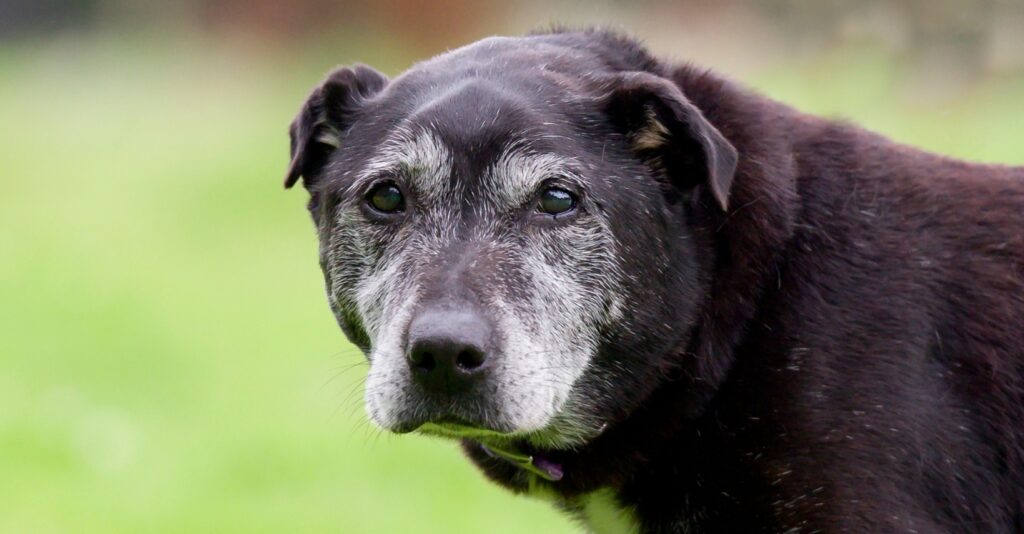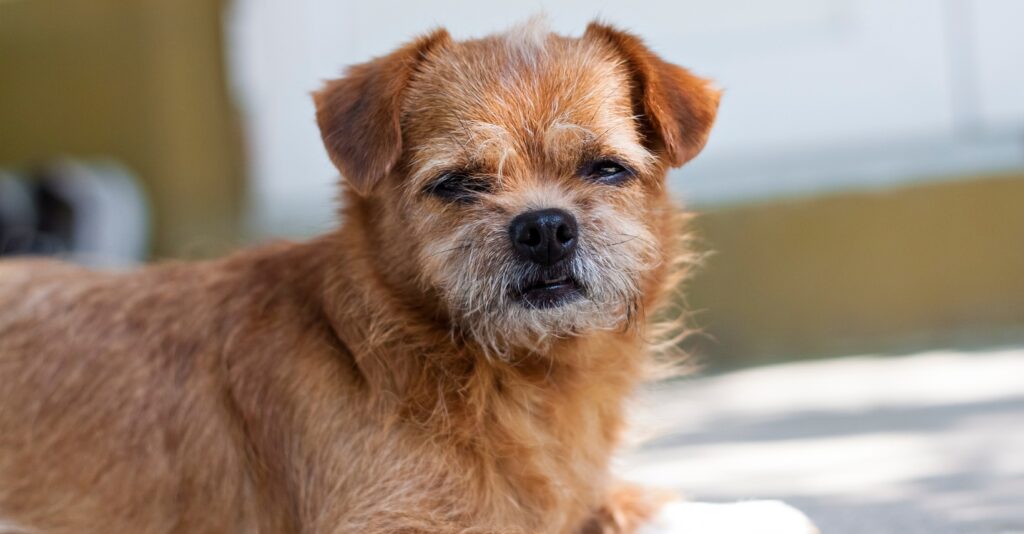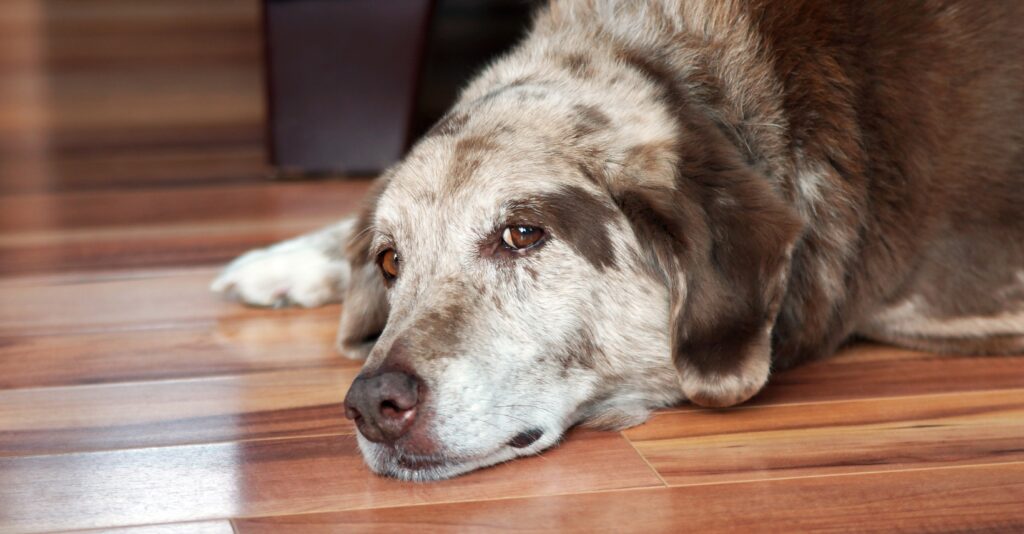Training for senior dogs: Tips for keeping your dog’s mind and body healthy

Senior dogs are loving and gentle souls with their own specific needs.
Many wrongly believe training is only for young and energetic dogs. Training can be an effective tool for helping your senior dog get the best of their golden years.
Dog trainer Bianca Steinmetz explains the particular needs of senior dogs and how to use training to support them in enjoying a happy life.
How to use training to encourage gentle movement in senior dogs
Bianca Steinmetz, Bianca’s Dog Training and Behavioural Consulting
What are the needs of senior dogs?
The gift of the grey muzzle is truly special, and we can do a lot to support our dogs when age is taking a toll on their physical and mental health. Senior dogs have specific needs requiring attention and care to ensure a comfortable and fulfilling life in their golden years.

Here are some important aspects to consider:
- Physical Health: As dogs age, they may experience joint stiffness, arthritis, reduced mobility, and muscle weakness. They might have difficulty getting up or walking for extended periods.
- Mental Health: Senior dogs may experience cognitive decline, leading to confusion or disorientation. They might become less responsive or show changes in behaviour.
- Dietary Considerations: Older dogs may have different dietary requirements than younger ones. They may need a senior-specific dog food that caters to their changing nutritional and caloric needs.
- Veterinary Care: Regular visits to the veterinarian become even more crucial for senior dogs. They should have check-ups to monitor their health and address any emerging issues promptly.
- Comfortable Living Environment: Make their living space comfortable and easily accessible. For example, providing soft bedding with orthopedic cushioning (available with waterproof coverings) and ensuring their food and water dishes are at an appropriate height can help.
- Exercise: While their exercise needs might decrease, senior dogs still require regular, gentle exercise to maintain mobility and manage weight. However, it’s essential to tailor exercise to their individual abilities. Shorter walks with lots of time to sniff and explore with their noses are a wonderful way to keep our senior dogs engaged. Hydrotherapy or swimming in warm lakes can help keep muscle tissues strong without putting too much strain on their bodies.
- Emotional Support: Older dogs may become more sensitive and require extra love and attention to keep them emotionally content. Losing the ability to see, hear, move around and play like a young dog is hard for our best friends. Extra TLC and cuddle time combined with light massages is a wonderful way to be there for them.
Limitations to be aware of while living with a senior dog:
- Physical Limitations: Senior dogs might struggle with stairs or jumping onto furniture. Consider installing ramps and providing step-free access to their favourite spots. Lifting them out of the car or carrying them down a flight of stairs can help their body a lot, especially if these are daily movements.
- Incontinence: Some senior dogs may experience bladder control issues. Be prepared for accidents and practice patience while house training or managing this condition. Increasing bathroom breaks while utilizing waterproof covers for bedding helps keep our seniors comfortable.
- Temperature Sensitivity: Older dogs might be more sensitive to extreme temperatures, so take care to keep them cool in hot weather and warm in cold weather. A cooling vest or cooling bed is a great option as a cover for their orthopedic beds on hot summer days. During cold weather days, fleece jackets and especially drying coats are highly beneficial to help them keep their bodies and muscles warm to prevent injuries.
- Sensory Changes: Hearing and vision loss are common in senior dogs, affecting their ability to respond to commands or become startled easily. Be aware of any change in motion patterns. If your dog suddenly starts running into furniture, check their eyes, and adjust their surroundings accordingly. Should you notice your dog doesn’t wake up anymore when you walk into the room, don’t startle them by touching their body but hold a treat close to their nose, which is a gentle way to wake them up without scaring them.

How to use training to encourage gentle movement in senior dogs:
If you are concerned your dog isn’t moving around as much or seems in pain, check with your vet first.
Set up a safe and enriched environment where your dog can explore and interact with various objects and activities at their own pace. The goal is to encourage the dog to move gently and without force, reducing the risk of injury or stress, which is especially important for seniors with physical limitations or health issues.
Create a Safe Environment: Set up a designated area where the senior dog can move freely without any potential hazards. Remove any obstacles or objects that may risk the dog’s safety. Make sure the flooring is not slippery. Take off your dog’s collar and harness so they can move freely without any restrictions.
Provide Choices: Scatter different objects and activities throughout the area, such as low-impact toys, puzzle games, soft mats, or comfortable resting spots. The dog can choose which activities they want to engage in, promoting a sense of autonomy and control. Place the activities at different heights and angles to promote stretching and allow the dog to engage in activities in the most comfortable body positions. Use different treats and find out your dog’s preference that day. You can hide two different kinds of treats in your hands, hold the hand in front of your dog’s nose, and the hand your dog pays the most attention to is the hand with the preferred treat.
Use Positive Reinforcement: When the senior dog interacts with objects or engages in gentle movement, offer praise and rewards to reinforce these positive behaviours. This positive reinforcement will encourage the dog to continue engaging in gentle movements.
Respect Their Pace: Senior dogs may have slower mobility or reduced energy levels. Allow the dog to set the pace and avoid pressuring them into activities they’re not comfortable with. Focus on encouraging them to move gently and comfortably.
Observe and Adjust: Watch your senior dog’s behaviour closely. If you notice any signs of discomfort or fatigue, provide opportunities for them to rest or adjust the environment accordingly.
Seek Professional Guidance: If you’re unsure how to encourage gentle movement in your senior dog, consider consulting a veterinarian.

Remember that every dog is unique, and what works for one may not work for another. And every day is different. Seniors have good and bad days, like we all. Changes in the weather can have a huge impact on their well-being. An active day can lead to a moody sore day, and so on.
Always prioritize your senior dog’s comfort, safety, and well-being throughout training or activity.
The beauty of a senior dog lies not just in their physical grace but in the profound bond that time has nurtured between them and their human companion, a connection built on shared experiences, loyalty, and the understanding that age only deepens the love between two kindred spirits. Enjoy and cherish every moment.
You can help your senior dog enjoy their golden years to the fullest!
Training and promoting gentle movement in senior dogs is crucial for their overall well-being and quality of life.
You can help your senior dog stay active and mentally stimulated through humane training while prioritizing their comfort and considering their individual needs.
Happy training!
For more expert tips and guidance on training and caring for your dog, be sure to explore:
- New beginnings: A guide to puppy training
- From rambunctious to refined: Tips to train your adolescent dog
- Keeping your adult dog sharp: Dog training for mental stimulation